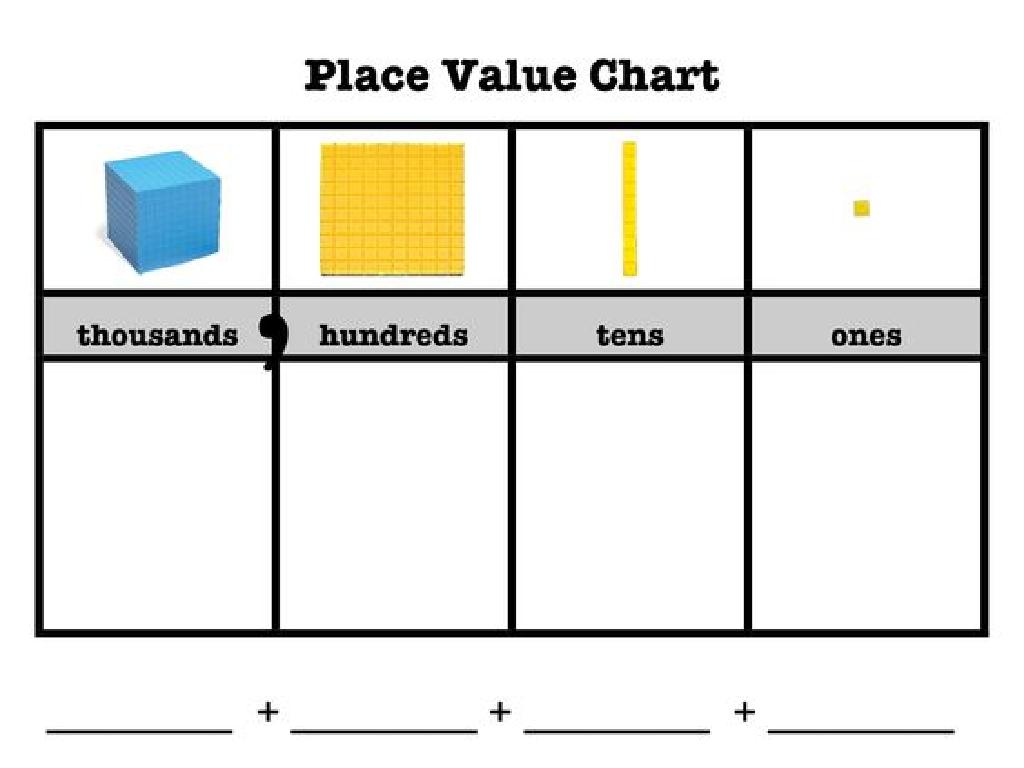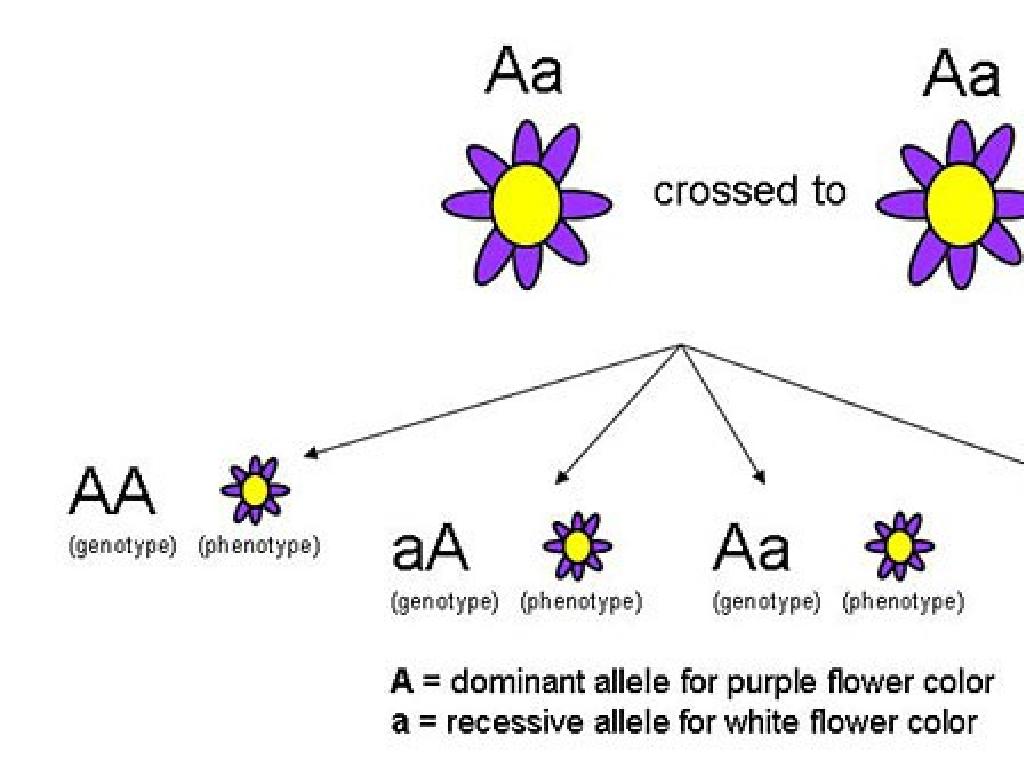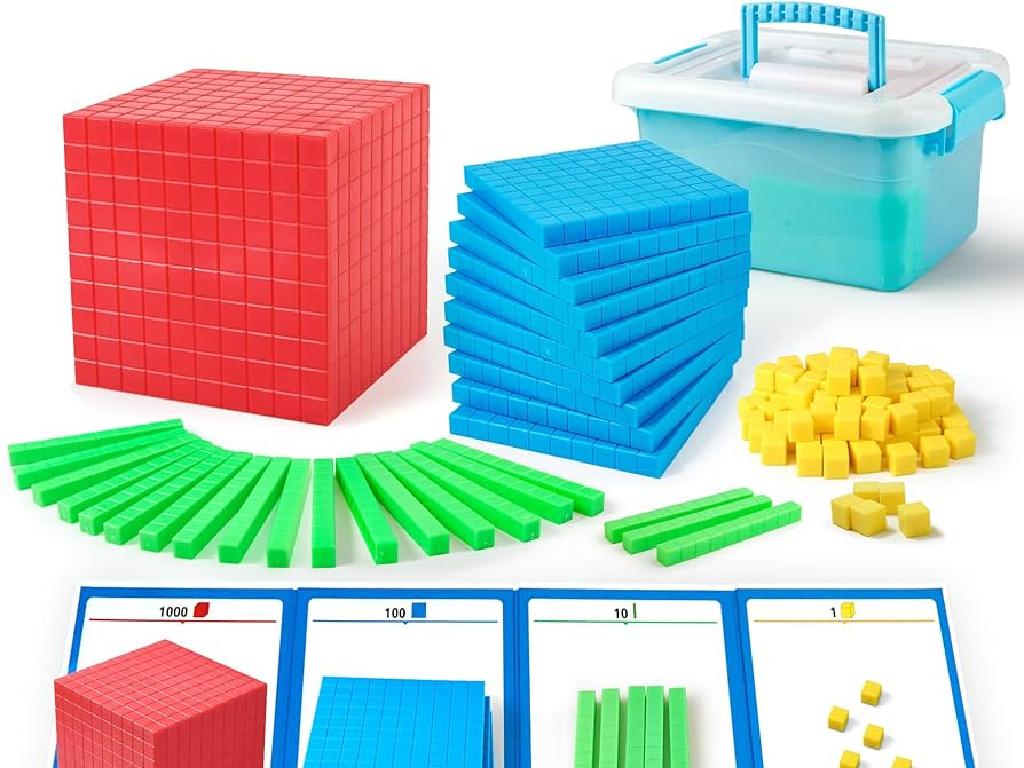Spell Rhyming Words To Answer Riddles
Subject: Language arts
Grade: Third grade
Topic: Short And Long Vowels
Please LOG IN to download the presentation. Access is available to registered users only.
View More Content
Welcome to Rhyming Words!
– Discover short & long vowels
– Define rhyming words
– Words that sound the same at the end, like ‘cat’ and ‘hat’
– See examples of rhymes
– ‘Bike’ rhymes with ‘like’, ‘moon’ with ‘tune’
– Practice with riddles
– Solve riddles using rhymes we learn
|
This slide introduces the concept of rhyming words, focusing on the difference between short and long vowel sounds. Begin by explaining vowels and the difference in their sounds when they are ‘short’ or ‘long’. Define rhyming words as those that have the same ending sound. Provide clear examples of rhyming words, ensuring to include both short and long vowel sounds. Engage the class with a fun riddle activity where they use rhymes to find answers. This will help students apply their understanding of rhymes in a practical and enjoyable way. Encourage participation and assist students who may struggle with identifying rhymes.
Understanding Vowels: Short and Long Sounds
– Meet the Vowels: A, E, I, O, U
– Vowels are special letters in our alphabet.
– Short vs. Long Vowel Sounds
– Short vowels sound like: ‘a’ in apple, ‘e’ in bed; long vowels say their name.
– Listening Activity: Find the Sounds
– We’ll listen to words and identify if the vowel sound is short or long.
– Practice with Rhyming Riddles
|
Introduce the concept of vowels to the students, emphasizing the five vowels and their importance in creating words. Explain the difference between short and long vowels, providing examples for each. Conduct a listening activity where students listen to words and determine whether they contain a short or long vowel sound. This will help them in understanding the concept of rhyming words as they prepare for the rhyming riddles activity. Encourage participation and make sure to correct any misconceptions. Prepare a list of words with both short and long vowel sounds for the listening activity.
Short Vowel Fun: Cracking the Code
– Understanding short vowels
– A vowel is short when it’s not the word’s main sound, like ‘a’ in ‘cat’.
– Examples of short vowel words
– ‘Cat’, ‘bed’, ‘big’, ‘pot’, ‘cut’ are a few examples.
– Class chant with short vowels
– We’ll chant together to remember the sounds: a-e-i-o-u!
– Practice with short vowel riddles
– Solve riddles using words with short vowels.
|
This slide introduces the concept of short vowels through explanation, examples, and interactive class chants. Begin by explaining that a short vowel sound is like the ‘a’ in ‘cat’, where the vowel does not say its name. Provide clear examples for each vowel sound and engage the class in a fun chant to help memorize them. After the chant, present riddles where the answers are short vowel words to reinforce learning. For example, ‘I start with an ‘a’ and end with a ‘t’, I’m a pet you might get, what am I?’ (Answer: cat). This activity will help students recognize and practice short vowel sounds in a playful and memorable way.
The Magic of Long Vowels
– What defines a long vowel sound?
– A vowel says its name, like ‘A’ in ‘cake’.
– Examples of long vowel words
– ‘Cake’, ‘seat’, ‘bike’, ‘cone’, ‘cute’.
– Sing the Long Vowel Song
– A catchy tune to remember the sounds.
– Practice with long vowels
– Find & write words with long vowel sounds.
|
This slide introduces the concept of long vowels to third-grade students. Begin by explaining that a long vowel is when the vowel sounds like its name, such as the ‘A’ in ‘cake’. Provide examples for each vowel to illustrate the concept. Introduce the Long Vowel Song to help students memorize the sounds in a fun and engaging way. Finally, encourage students to practice by finding and writing their own examples of long vowel words. This activity will help reinforce their understanding and ability to identify long vowels in different words.
Rhyming Riddles with Vowels
– Solving rhyming riddles
– Listen to the sounds and find words that sound similar
– Short vowel riddle example
– ‘I sit when you read, I sleep under your head. What am I?’ (Answer: Pillow)
– Long vowel riddle example
– ‘I’m bright when the sky is blue, I’m higher than a tree or you. What am I?’ (Answer: Kite)
– Practice with vowel sounds
|
This slide introduces students to the concept of rhyming riddles, focusing on short and long vowel sounds. Start by explaining how to solve a riddle by listening for rhyming words and understanding the clues. Provide examples of riddles that use short and long vowel sounds to illustrate the concept. Encourage students to think about the vowel sounds in each riddle and how they help to find the answer. In the next class, have students come up with their own riddles based on different vowel sounds and share them with the class to promote active participation and reinforce their understanding of short and long vowels.
Let’s Play a Rhyming Game!
– Learn the rules of the game
– Group activity: rhyming hunt
– Work together to find words that rhyme
– Share your rhymes with classmates
– Each group will present their rhymes
– Discuss rhyming word patterns
– Notice the short and long vowel sounds
|
This slide introduces a fun and interactive rhyming game designed to help third graders understand and practice rhyming words, focusing on short and long vowel sounds. The game rules should be simple and clear to ensure all students know how to play. Organize the class into small groups and have them find words that rhyme with a given set of words. After the activity, each group will share their list of rhyming words with the class, promoting collaboration and public speaking skills. Encourage students to discuss the vowel patterns they notice in their rhyming words. This will help them understand the concept of short and long vowels in a practical and engaging way. Provide guidance and support throughout the activity, and prepare a list of riddles involving rhyming words for the groups to solve.
Rhyme Time Challenge: Short and Long Vowels
– Understand the challenge rules
– Create rhymes individually
– Think of words that sound alike
– Time to be quick and creative
– Use a timer to make it exciting
– Share your rhymes with the class
– Practice speaking clearly
|
This slide introduces the Rhyme Time Challenge, an engaging activity for third graders to practice spelling and understanding short and long vowels through rhyming words. Students will individually create rhymes as quickly as they can, focusing on words that have similar ending sounds. Provide examples of short and long vowel sounds to help them get started. Once they have created their rhymes, they will present them to the class, which will help with their public speaking and confidence. Encourage creativity and praise their efforts to make the activity enjoyable. Possible activities: 1) Rhyming relay race, 2) Rhyme and spell bee, 3) Rhyme scavenger hunt, 4) Rhyme craft time, 5) Rhyme charades.
Class Activity: Rhyming Word Pairs
– Understand rhyming words
– Words that sound the same at the end, like ‘cat’ and ‘hat’
– Pair up and find rhymes
– Work with a buddy to list words that rhyme
– Create a rhyming riddle
– Use your rhymes to make a fun riddle
– Share riddles with class
– Present your riddle to your classmates
|
This activity is designed to help students understand and practice rhyming words, which are words that have the same ending sound. Start by explaining what rhyming words are and provide examples. Then, have the students pair up and brainstorm a list of words that rhyme. Once they have their list, each pair will create a riddle that includes their rhyming words. Encourage creativity and fun with this exercise. After creating their riddles, each pair will have the opportunity to share their riddle with the class, and the class can guess the answer. This activity promotes collaboration, phonemic awareness, and critical thinking. Possible activities for different pairs could include creating riddles based on different vowel sounds or focusing on rhymes with a specific number of syllables.
Wrapping Up: Rhymes and Riddles
– Review today’s rhyming lesson
– Homework: Create 5 rhyming riddles
– Think of words that rhyme and craft a clever question
– Use short and long vowel sounds
– Remember, vowel sounds can be ‘a-e-i-o-u’ and sometimes ‘y’
– Get ready to share with the class
|
As we conclude today’s lesson on short and long vowels in rhyming words, assign the students to write five original rhyming riddles for homework. This will reinforce their understanding of vowel sounds and rhyming patterns. Encourage creativity and remind them to use a mix of short and long vowel sounds in their riddles. In the next class, we’ll have a sharing session where students can present their riddles and guess the answers together, fostering a fun and interactive learning environment. Provide examples of rhyming riddles to inspire them and clarify any confusion about vowel sounds.





